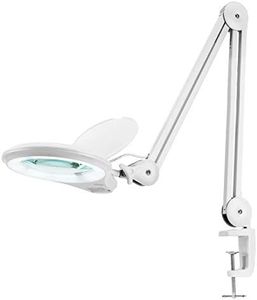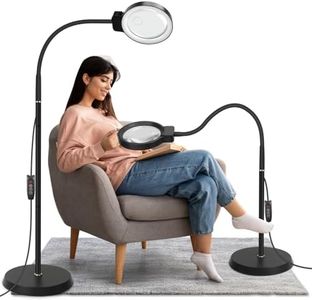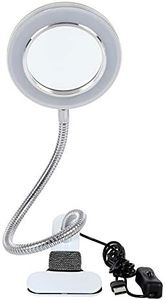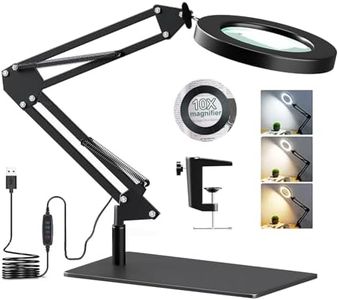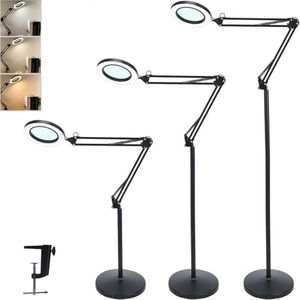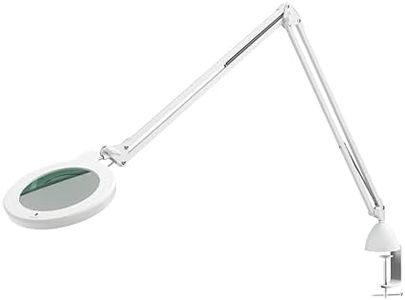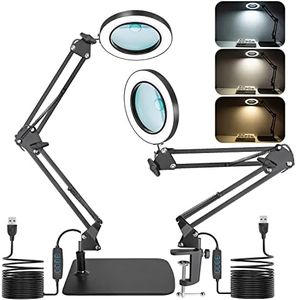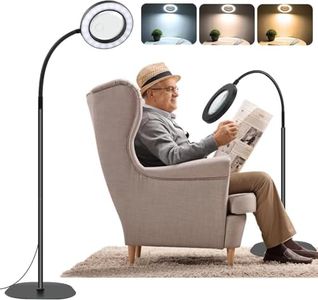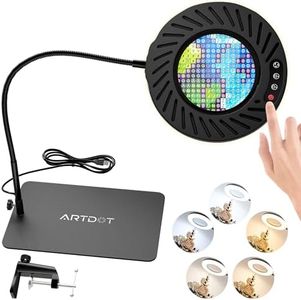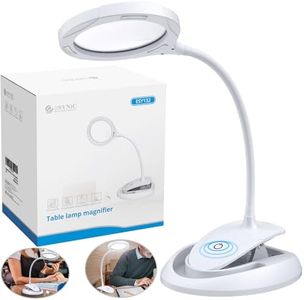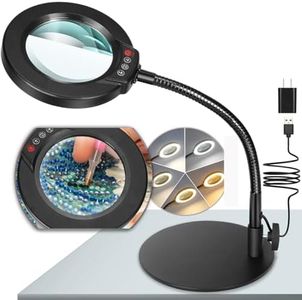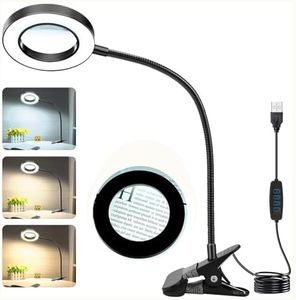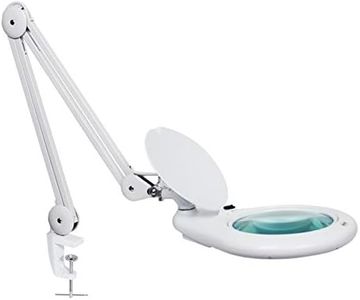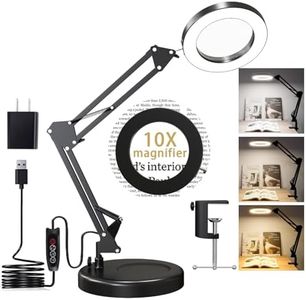We Use CookiesWe use cookies to enhance the security, performance,
functionality and for analytical and promotional activities. By continuing to browse this site you
are agreeing to our privacy policy
10 Best Magnifying Lamps
From leading brands and best sellers available on the web.By clicking on a link to a third party's website, log data is shared with that third party.
Buying Guide for the Best Magnifying Lamps
Magnifying lamps are essential tools for anyone who needs to see small details clearly while keeping their hands free. They combine magnification and illumination, making them invaluable for tasks like reading fine print, crafting, model building, electronics work, or beauty treatments. When choosing a magnifying lamp, it’s important to think about where and how you plan to use it, what level of detail you need to see, and how much flexibility you require for positioning the lamp.Magnification PowerMagnification power indicates how much larger the lamp can make the object appear, usually shown as a number followed by 'x' (for example, 2x, 5x, etc.). This is important because different tasks need different amounts of zoom – for example, basic reading may only need 2-3x, while intricate work like inspecting circuit boards or jewelry may need 5x or higher. Generally, lower magnification (2x-3x) provides a wider viewing area but less detail, while higher magnification (5x and above) gives more detail but a smaller viewing window. Choose the right magnification based on how small the details are that you need to see and how much of the area you need visible at once.
Light SourceThe type and quality of the lamp's light source affect how well you can see details. Common light sources are LED, fluorescent, and sometimes incandescent bulbs. LED lights are the most popular now because they are energy-efficient, cool to the touch, and last a long time. Bright, even lighting without harsh shadows is important for detail work. Think about whether you want adjustable brightness, the color temperature (cool or warm light), and whether the light can be replaced if it fails. For most tasks, adjustable LED lighting is ideal for a comfortable and clear view.
Lens Size and MaterialThe size of the lens determines how much of your project is visible at once, while the material (glass or acrylic) affects both clarity and durability. Larger lenses allow you to see more area but can add weight, while smaller lenses focus on smaller sections. Glass lenses tend to be clearer and more scratch-resistant but are heavier and more fragile. Acrylic is lighter and less expensive but can scratch more easily. If you need higher clarity and won't be moving the lamp much, glass is usually better; if portability or safety is key, look at acrylic options.
Arm or Stand FlexibilityThis refers to how easily you can adjust the position and angle of the lamp and lens. Some magnifying lamps come with flexible gooseneck arms, articulated arms with springs, or fixed stands. Flexible arms allow you to bring the light and lens right where you need them, which is essential for detailed work. If you do tasks that require moving the lamp often or focusing on different areas, pick a model with a highly adjustable or long arm. For stationary use, a fixed stand or a simple adjustable arm can be enough.
Mounting StyleMagnifying lamps are typically available as clamp-on, freestanding, or desktop models. Clamps are great if you need to save space and want to attach the lamp to a table or workbench. Freestanding models can be moved around easily and don’t require a surface edge, making them good for flexible workspaces or large areas. Desktop versions are a balance between the two and are ideal if you have a dedicated space. Consider your workspace and whether you need portability or fixed placement to decide which mounting style works best for you.
